Winslow Homer (1836 – 1910) was a remarkable American painter who mastered several mediums, including oils and watercolors. He lived a fascinating life; working as a commercial illustrator, an artist-correspondent for the Civil War, being published on commemorative stamps and achieving financial success as a fine artist. He did all this as a largely self-taught artist.
In this post, I take a closer look at his life and art. I cover:
- Key Facts
- A Closer Look at Some of Homer’s Paintings
- Winslow Homer Quotes
- Want to Learn More?
- Thanks for Reading!

(Before diving into this post, make sure to pick up a copy of my free Landscape Painting Starter Kit.)
Key Facts
- He was born in Boston, Massachusetts in 1836. From a young age, he was encouraged to paint by his mother, who was a talented watercolor artist.
- He started his career as an apprentice to a commercial lithographer. He then embarked on a career as a commercial illustrator, which lasted for around 20 years. His work in illustration explains the distinct style of his paintings.
- He was mostly self-taught, learning the fundamentals from his time as an apprentice lithographer and commercial illustrator. But he did take a few art classes here and there.
- American painter and teacher, Robert Henri, referred to Homer as an “integrity of nature”.
- In 1962, Homer’s Breezing Up was featured on a commemorative stamp issued by the U.S. Post Office. That painting is now hanging in the National Gallery in Washington DC.


- Homer was sent by Harper’s Magazine to the Civil War (1861 – 1865) as an artist-correspondent. There, he depicted scenes of war, including chaotic battles and quiet moments at camp.

- Upon his return from war, he used his sketches as inspiration for a series of paintings depicting the war, such as Home Sweet Home and Sharpshooter.


- Around 1873, Homer began painting in watercolors more frequently. He experimented with a wide range of techniques and styles, from detailed and intricate paintings like Blackboard (shown below), to relaxed paintings like The Blazing Sunset (featured later in this post). Today, many know of Homer for his watercolor work alone.

- In 1875, Homer ceased his work as a commercial illustrator to make a living from his paintings. In 1876, at the Centennial Exposition in Philadelphia, his Snap-the-Whip and Breezing Up paintings were exhibited. Homer was widely applauded for his work, but he did receive criticism from author Henry James who wrote of these works:
“We frankly confess that we detest his subjects … he has chosen the least pictorial range of scenery and civilization; he has resolutely treated them as if they were pictorial … and, to reward his audacity, he has incontestably succeeded.”
- In 1883, Homer moved to his family’s estate in Prouts Neck, Maine. From there, he created many of his now-famous marine paintings, like Eight Bells (shown below) and Undertow (featured later in this post).

- In 1893, Homer painted The Fox Hunt, which was immediately purchased by the Pennsylvania Academy of the Fine Arts. It was Homer’s largest painting, coming in around 38 × 68½ inches (96.5 × 174 cm).

- Homer reached financial stability around 1900, with steady sales of his paintings to collectors.
- In 1910, Homer died at the age of 74 in his Prouts Neck studio. His Shooting the Rapids, Saguenay River remains unfinished, but it provides us with some insight into how he worked through a painting.

- In 2010, The Postal Service issued a commemorative stamp featuring Homer’s Boys in a Pasture. That painting now hangs at the Museum of Fine Arts in Boston and depicts two children who posed for Homer for 75 cents per day.

- Today, you can take tours of his Prouts Neck studio which is now owned by the Portland Museum of Art.
A Closer Look at Some of Homer’s Paintings
In the beautiful seascape painting below, notice the subtle color variation in the sky; there are all kinds of dull greens, yellows, reds and grays. In fact, there is hardly any blue. Keep this in mind next time you are painting a moody seascape. Don’t fall into the “sky is always blue” trap.
At the bottom of the painting, Homer gave the indication of wet sand reflecting light from the sky and water. Smooth brushwork was used for this area, in contrast against the rough and textured brushwork used for the crashing waves.

Below is a very delicate painting by Homer, featuring a young lady in a white dress amongst the landscape. As with many of Homer’s paintings, there is a moody feel to the landscape, with dark clouds overhead.
There are pleasing similarities between the lady and the delicate flowers next to her; both are painted with intricate detail and mostly light colors. The rest of the surrounding landscape is painted with relatively basic detail and dull colors.
This is also an excellent example of how to paint white subjects. If you look closely, you will see that hardly any pure white was used; the dress is made up of weak yellows, purples and grays. Homer reserved pure white for only the strongest highlights.

Below is a stunning example of value contrast (contrast between light and dark). The light in the background really jumps out of the painting. As Homer once said:
“It is wonderful how much depends upon the relations of black and white. A black and white, if properly balanced, suggests color.”
Also, notice the sweeping brushwork used in the foreground to suggest a strong wind. This is reinforced by the subject whose dress is catching the wind and who appears to be grabbing her hat to stop it from blowing away.

In Homer’s Girl Fisherman, the girl emerges from an abstract background. There is a seagull at the top of the painting and just a hint of clouds in the sky. The rest of the background is up to your imagination. The girl, by contrast, is painted with intricate detail and soft, muted colors.

Homer’s colorful watercolor painting below features a pleasing contrast between oranges and blues (complementary colors). I am not sure how Homer painted this, but I assume he started with general washes then scumbled color over the top. Homer also used black to draw your attention to the boat in the middle.

The painting below is much more relaxed, which is appropriate for depicting the fading light of the sunset (less light means less clarity). The painting is limited in terms of hue, with red and black dominating.

The painting below hints at Homer’s work in illustration, with the careful and almost exaggerated rendering of the subjects. What I love about the painting is the control shown in the water; you get a sense of the water’s form and movement without it feeling overdone.

Below is a demonstration of Homer’s remarkable control and overall talent. The colors are muted, but not bland. The composition is clever, with there being a pleasing balance between detailed and simplified areas. The brushwork is intricate yet not overdone. Finally, the deep black used for the teacher’s dress and blackboard draws your attention through the painting towards the center.

Winslow Homer Quotes
On talent…
“There is no such thing as talent. What they call talent is nothing but the capacity for doing continuous work in the right way.”
On watercolor painting…
“You will see, in the future I will live by my watercolors.”
On painting from photos…
“Artists should never look at pictures, but should stutter in a language of their own.”
“I prefer every time a picture composed and painted outdoors. The thing is done without your knowing it.”
On light…
“The Sun will not rise or set without my notice and thanks.”
“You have the sky overhead giving one light; then the reflected light from whatever reflects; then the direct light of the sun; so that, in the blending and suffusing of these several luminations, there is no such thing as a line to be seen anywhere.”
On composition…
“Never put more than two waves in a picture; it’s fussy.”
“When you paint, try to put down exactly what you see. Whatever else you have to offer will come out anyway.”
On value…
“It is wonderful how much depends upon the relations of black and white. A black and white, if properly balanced, suggests color.”
Misc…
“I regret very much that I have painted a picture that requires any description.”
“Look at nature, work independently, and solve your own problems.”
“The life that I have chosen gives me my full hours of enjoyment.”
“All is lovely outside my house and inside my house and myself.”
“The most interesting part of my life is of no concern to the public.”
“Oh what a friend chance can be – when it chooses.”

Want to Learn More?
You might be interested in my Painting Academy course. I’ll walk you through the time-tested fundamentals of painting. It’s perfect for absolute beginner to intermediate painters.
Thanks for Reading!
I appreciate you taking the time to read this post and I hope you found it helpful. Feel free to share it with friends.
Happy painting!
Dan Scott

Draw Paint Academy

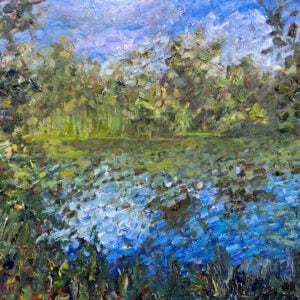
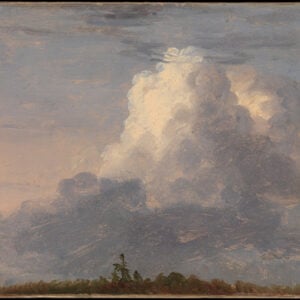
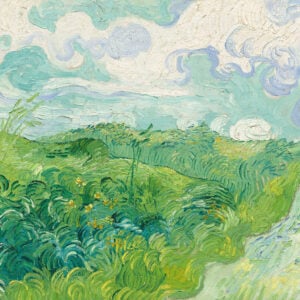
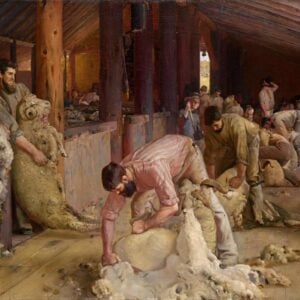
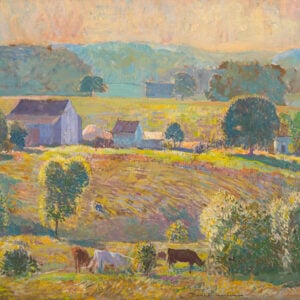
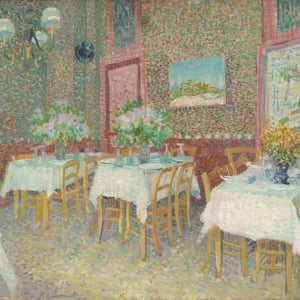
Dear Dan. I love all your articles. They are so well put together and explained. I think all your readers always learn lots of things from them. Thank you so much for sharing. You are very generous and kind to your readers.
Corinne from Switzerland
Thank you, thank you, thank you. Every time you show up in my mail box I learn something. And it’s usually an answer to a question I have searching for. I knew very little about Winslow. As you take each of his pictures and dissect them with care, my lack of formal art education shrinks a little bit more. You are an excellent teacher. Thank you.
Hi Dan , I echo Corrines sentiments .The articles are great and Im discovering new artists along the way.
Many thanks
Jacky
Thank you so much for sharing your knowledge, and the knowledge of other artists with your readers. It gives so much inspiration.
Dan, I so appreciate all you share. As you observed about Homer, “The colors are muted, but not bland.” How do you think he managed to do that so well?
Thank you very much Dan for your articles! I love reading and viewing all of them and learn so much!
I have always been drawn to Winslow Homer’s paintings. Thank you for your input on his work.
Love your articles, this one especially. Thank you.
Hey, Dan… Your analyses of great art are so helpful… As an artist yourself, you select wonderful examples to show us the lessons to be learned in great paintings… Thanks you!
Dan,
I am a beginner at age 70 and love the insights and information your articles bring to me. Learning and growing, seeing some of the inspiration in this mind come on to canvas – gives me comfort. Practice, practice, and practicing! Herriman, Utah
I always look forward to your insightful commentary!
Thanks for the details of Winslow Homers analytical notes.He is the greatest fine Artist.This will improve me to understand .
Hi Dan,
Thank you so very much for sharing with us the work of Winslow Homer. I must say, he is by far my favorite artist I have had the pleasure of seeing, to date. 🙂 My favorites are Snap the Whip and Girl Fisherman. I love the depth of each.
Thanks again
Bev MacPhee
Dear Dan,
Your articles are full of information and insights into an artists world. Love them all. Thank you.
Pat Fullam
Hello Dan, I so agree with all these comments. I love reading about all these artists.
I am an uneducated amateur of painting. I am always drawn to Winslow Homer!
I so enjoyed learning about him! Thank you for sharing!
I just love this artist, he is quite inspirational and I had not heard of him before.
Thankyou so much for these little gems
Thank you, Dan for showing the paintings of Winslow Homes. I have one of his books. I think he is a great painter. Thanks for taking the time and sharing Winslow’s suggestions on how to be a better painter. I look forward to hearing from you real soon. In the meantime I will be keeping in mind all the important facts you have given me to become a better painter.
Thanks for a most insightful article. The Winslow Homer studio is but half an hour from where I live in summer. Unfortunately, it’s quite expensive to tour the facility so had to check it out on line instead.
Thank you, Dan.
Thank you for a most interesting and enlightening article. I’m saving it for a re-read.
I vacation in Maine every summer and I am quite familiar with Winslow Homer’s paintings. Your comments on his paintings helped me to have a greater appreciation of his works.
I always enjoy your articlesAnd learn so much. I especially this one.
Thank you
Thanks Dan, that was refreshing, I particularly enjoyed his quotes.
Sounds like his life was a complete one. Lucky buggar !.
Keep ’em coming Dan.
Thaks, Dave M ( AUSTRALIA )
There was no way I could share this??
Don Airington
Hi Don
Thanks for your comment.
At the top of the post, there is a Pinterest or Facebook Share option.
Hope this helps.
Thanks
Dan
Dan, what a wonderful dissertation of Homer! I have so many books on him, yet you create new insights from your analytical views. Living in New England he has always been one of my favorites, along with Andrew Wyeth. So thank you for a great job of writing!
By the way Dan, I forgot to mention that last fall, I was able to spend the better part of one day at the Clark Museum in the Berkshire mountains of Massachusetts. They had a fantastic collection of Homers, where I could get “right up close and personal”
which was quite a thrill.
Excellently written! I enjoyed this so much. I collect art books and have a book on his life and work.
Winslow Homer is one of my favorites, so I was very happy to see you featuring his work in this lesson. I heard that a friend once challenged him by claiming that no interesting painting could ever be done using just the color brown (and white, of course.) He responded by painting a scene of ocean waves breaking over rocks, which was spectacular. His series set in Bermuda is wonderful, as well. Thanks for all your wonderful lessons, even for those of us who can’t remotely be considered painters!
Thanks, Dan! I love seeing art and art history through the eye and insight of another artist.
Show us more tomorrow!
Thanks for posting this read on Winslow Homer. He is one of my favorite artists! I often use his paintings for my Facebook cover photo, giving him credit in the comments. I cannot get enough of his work!
Thanks Dan for generously sharing your insights and covering so many artists especially American ones. In Britain the emphasis seems to be on European artists especially from the 19th century so I have learned so much from you. Really grateful and inspired.
Hi Dan, a great artist I did not know much about.
A Pleasure to read about and very useful ideas for the practicing artist.
Thoroughly enjoyed your article. Stumbled upon it while preparing a presentation on Homer’s fishing paintings for a fly fishing club I belong to in Central Florida. Thank you sincerely for posting it.